He was accompanied by the pain he felt, in the form of the art he had in his nature and the methods he had learned.
Youth and Eagerness to Learn:
Sinai was born in 1319 in Sari. The son of an educated and knowledgeable family, he spent his youth learning to reflect the results of his youthful learning in his works for years
He travelled to gain knowledge and first came to Tehran from Sari and after her primary and secondary education; he graduated from Alborz High School.
He continued his path to science by travelling to Austria; In Europe, with his amazing architecture, he chose to study architecture and studied architecture in Vienna between 1337 and 1342.
Sinai studied composition at the University of Music and Performing Arts in Vienna when he was about 20 years old. He also participated in film and screenwriting classes in Austria in the 1960s.
He completed his studies in this field at the same university where he studies music and graduated with honours. This young Iranian, who was immersed in art and education for about eight years of his life in Europe, went to Iran with his teachings and experiences to present what he had gained in his homeland in the form of his works of art.
First Artistic Activities:
Because Sinai's learning and consequent interests spanned a wide range of fields, his art manifested itself in a variety of subjects: from publishing poetry books to making short films and collaborating with television.
In 1342, Sinai published his first book of poetry entitled "Sludge Blisters" and in the same years, while still studying art academically, he performed as an accordionist in an orchestra and as a solo performer.
His return to Iran in 1346 was the beginning of another form of his work and activities. Sinaei, who built his art world on his interests in Europe, took a concerned look at social issues in his documentaries and short films when he came to Iran.
He started making his very important documentary "Lost Lament" in 1349, but the problems he faced caused his work to be completed in 1362.
Sinai, who was intimately acquainted with the hardships of Polish immigrants living in Iran, saw that it could be projected into a documentary and took such a careful look at the subject that years later he was awarded the Polish Special Emblem by the President of the Republic.
In the years before the Islamic Revolution in Iran, he collaborated with the public sector of cinema as well as television, and these were the moments when he directed several documentaries and short films.
Feature Films:
Although Sinai had years of experience in filmmaking, he was in no hurry to enter the world of feature films. In his early 40s, he made his first feature film debut "Viva".
The director's first film seems to be influenced by the prevailing atmosphere of the society in the late 1350s, more than it is similar to his other works in the cinema or the colour of his concerns in his other artistic activities.
The "Inner Monster" is the second Sinai film he wrote his own screenplay, although it also looks at political issues through the character's background, above all, it is a narrative of a character's inner loneliness; the same inner black face that can, like a nightmare, call the soul narrow and insane.
"Friend at Home", however, is one of Sinai's utterances and writings: a film about the grief of homelessness and the desire to find relatives, the acquisition of an identity that may be lost in a distant country, and the twists and turns of the story. In this composition, Sinai also talks about confrontation.
Sinai is one of those filmmakers who has not been far from the pulse of his society and has not lost his faith and language in the prevailing atmosphere. It is this moderation and finding his own tone that gives originality to his works like Alleys of Love" film."
"Bride of Fire" can be considered one of the most significant works of Sinai cinema, a film critical of the anti-woman tradition in the south of the country.
"Like a Story" is another Sinai's film that deals with the people of the south of the country, and this time what focuses on this thoughtful filmmaker is human behaviour outside the front lines of the war. "Autumn Alley", "Conversation with the Shadows" and "Colorful Island" are the documentaries that are based on the documentary despite the narrative structure
"Autumn Alley" talks about the new art gallery and the concerns that Sinai has about painting. "Conversation with the Shadows" provides the audience with more information about Sadegh Hedayat, a well-known Iranian writer, and "Colorful Island" exposes the beauties of the unique island of Hormoz to the audience.
Documentaries:
A significant part of Sinai's portfolio is the documentaries he has made. He has followed a relatively similar path and thinking about documentaries, as seen in his films.
Images of human suffering, the subject of immigrants, the concerns of women, etc are seen in Sinaei's works.
Sinai is best known as a documentary filmmaker, a documentary who trained many students and influenced later documentarians; But he himself preferred to know his cinematographer, no matter what media he used to express his concerns.
The Last Decade of Life:
Since Sinaei was not a one-man artist, he did not stop working during the years when there was not much opportunity for him to work in cinema, and writing and other works of art, in addition to education, kept his artistic spirit alive.
Two collections of poetry, "Songs of the White Shapers" and "Pink Room", are among her works in the 1990s.
Eventually, Sinai died of the novel coronavirus at the age of 79, in August 2020.
The 14th edition of the Cinema Vérité, Iran’s major international festival for documentary films, plans to pay tribute to Sinai, a COVID-19 victim.
The 14th Iran International Documentary Film Festival known as “Cinema Verite” is scheduled to be organized totally online from December 15 to 22 in Tehran.
The Iranian festival has several sections including National, International, and Martyr Avini Prize, Entrepreneurship Documentary Competition, CoronaVirus Special Section, Side Sections and commemorations.
In the meantime, several expert workshops, master talks as well as masterclasses will be held in this international cinematic event.
The national competition section comprises the short, mid-length and feature-length documentaries.
The international section of this edition will be held in non-competition format due to the spread of Coronavirus.
The international section of the festival also enjoys numerous non-competition sections such Special Displays, Mirror of a Festival, Portrait, Perspective of One Country Documentary Cinema, Chile Documentary Cinema, Masters of 2020 as well as 13 Editions & 13 Films.
Due to the spread of Coronavirus, this edition of the festival will be held in online and remote format via utilizing the national platform in the country.
According to the director of the festival Mohammad Hamidi-Moqaddam, so far, 894 films have been submitted to the different sections of the event.
ZZ/PR



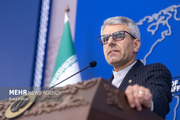



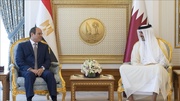
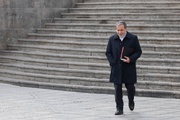
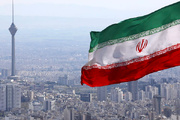
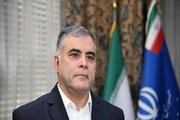
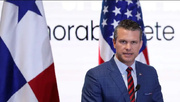






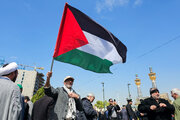
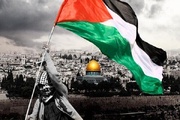


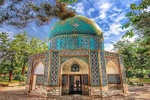

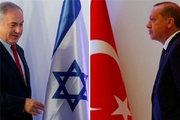
Your Comment